We recently told you about Vast Kaviya, an interesting setting for D&D5e which has successfully landed on Kickstarter and now we decided to review it. We decided to tell you our opinion about it so that you can erase the doubts that you still have and decide if you too want to venture into the dangerous Vast Kaviya!
Let’s start to point out the main content of the offer: these are two manuals in English, The Adventurer’s Handbook (132 pages) and the Campaign Setting (322 pages). The first is aimed primarily at players, while the second was designed for masters.
Two volumes, one style
These volumes have many elements in common and the graphics certainly stand out among them. The classical layout mainly on two columns, the motif that surrounds each page, the “dirty” and parchment-like background are clear examples. Also the font is classic, although this is not necessarily a virtue; the one used for the text is pleasant, while the one used for some main titles is difficult to read and stylistically out of tune with the other elements. The quality of the illustrations is on the same level: some of them are beautiful, some are a little less beautiful. This swing is a pity given the quality of the content. The maps in particular didn’t convince me too much. These aspects, on balance, do not penalize the work; it is only a pity that they cannot raise it to an even higher level.






The contents, however, are truly remarkable. They are not something never seen before, but they are well organized, coherent and know how to mix simplicity well with mysticism. In general, the reader has the impression of being able to find every imagery linked to wild lands and nature in its purest and most feral state. It never falls into the ridiculous: technological deficiencies are compensated by a mystical link with the elements of the world. In addition, the various chapters are separated by pages of text that contain lore and stories related to this world, excellent for getting into the right atmosphere even before sitting at the game table. But let’s not delay any longer, let’s dive into specific contents!


Vast Kaviya Adventurer’s Handbook
The manual immediately offers us a fully illustrated cover followed by a convenient index of contents.

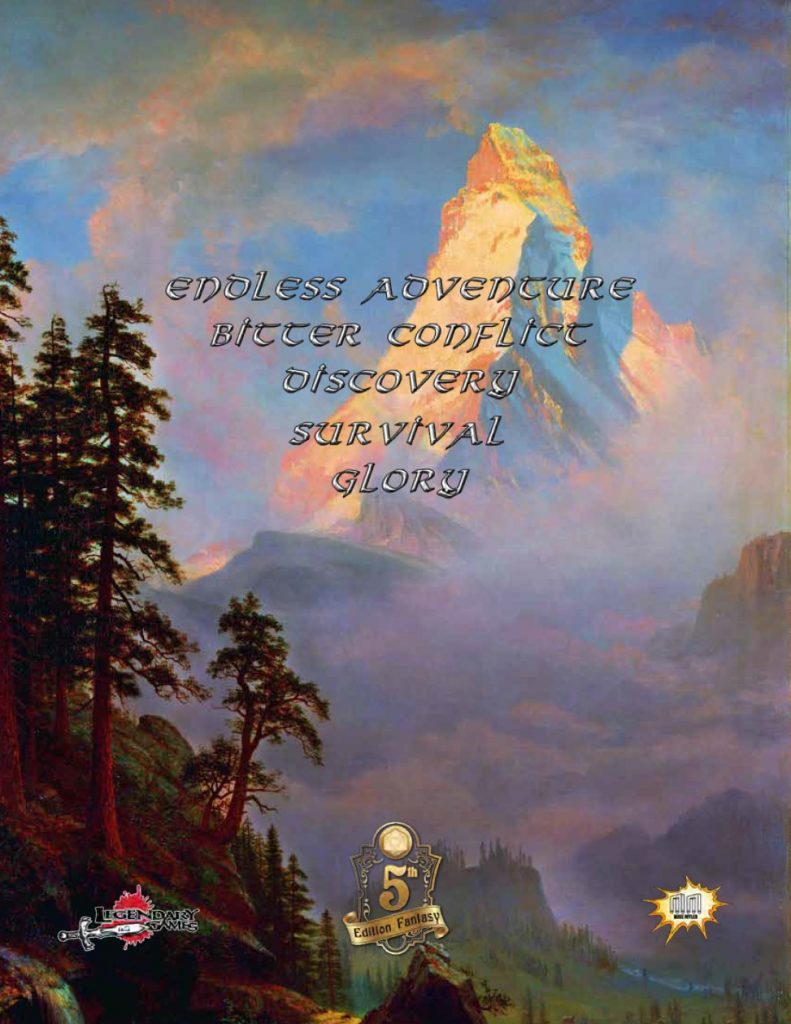
Chapter 1: Global Rules
The first real section of Vast Kaviya‘s Adventurer’s Book is related to the reference system, D&D5e, and explains how it differs from it.

The approach to society is completely different. Being a wild and primordial world, heavy armor is absent, but the author managed to propose a valid alternative by adding the proficiency bonus to the Armor Class given by medium armor. This doesn’t mean that it is a world of cave dwellers, indeed society is advanced in many aspects. Technological development is simply backward and this, for example, also affects the commerce.

And the lack of technological evolution also makes people see magic with fear; it’s an art so feared that it’s almost prohibited. It is not the result of study, but of connection with the world itself and becomes mysticism. For this the Wizard class is not present. Divine magic is also different: in the absence of gods, divine spellcasters derive their power only from the domains. Being so peculiar, magic is even more complicated and rituals need hours instead of minutes. Furthermore, some classic spells are absent here; mainly they are those that would favor a too simple survival in wild lands, such as Create Water or Goodberry.
The world is wild, full of beasts and strange races. The seasons are marked by the lunar calendar, created by observing over one hundred moons. Its vastness is such as to prevent mapping and travel is characterized by very high survival risks.
Chapter 2: World of Vast Kaviya

Here, in addition to hanging on to themes that have already emerged in the first chapter, we go further into the peculiar mechanics of this setting. First of all, however, a mention is also made of how history is handed down; being of oral tradition, it is not easy to find information about it. It’s also often linked to the only events that can mark civilizations and be remembered: cosmic events such as shooting stars and the destruction of moons.

The connection between the individual and the forces of the world is then made clear, possible through the mechanics of the Mana. This energy also allows you to take advantage of existing elemental energies to gain benefits through elemental powers. Vast Kaviya presents the following elements, absent in the basic system of D&D5e: Water, Air, Fire, Evil, Holy, Earth.
We then return with our feet on the ground and, given the high costs of trade, read about the importance of finding materials. Those known in this world are: horn, bone, bronze, iron, obsidian, steel and stone. Each of them has peculiar characteristics and some correspond to the magical weapons of the classic fantasy settings.
Chapter 3: Primordial Adventures

This chapter is related to the approach to have to fully appreciate Vast Kaviya, taking D&D5e as a reference point (even if it also contains notions already mentioned previously).
For example, the almost total absence of comforts is highlighted. The classic taverns? Don’t hope for them. Being able to dominate nature by levelling up a bit? Not even in your dreams, prepare to be devoured in sleep by some strange predator. Finding incredible treasures? Don’t be fooled, even a simple iron sword will make a difference here and will be treated almost like a unique object. You will prey on every killed enemy, wondering what his femur can do or how much poison you can extract from his glands.

The difficult fate of the spellcasters is reiterated: people do not understand magic and consider it something dangerous. But perhaps it would be more correct to call it “spirituality”; power arises from the bond of the individual with the forces of the world. This is done through the six elements: the characters bind to one and their characterization should be linked to it.
Chapter 4: New Races
The primordial world is an excellent excuse to be able to insert many exotic races without having to give too many explanations. In this way the players will have a wide choice and the world will be varied and alive. Here are the new races introduced by this setting:
- Aasimar: graceful humanoids with angelic traits.
- Alai: small humanoids linked to the wildest nature.
- Boggard: anthropomorphic frogs and toads.
- Genasi: humanoids who embody a blatant elemental lineage.
- Gnoll: feral anthropomorphic beasts.
- Kanca: anthropomorphic insects.
- Mist Subraces: “foggy” humanoids that are divided into mistdweorg (deriving from dwarfs) and mistling (related to halflings).
- Mongrelfolk: humanoids composed of parts of various beasts.
- Ottunni: pure psychic energy hosted by bodies that act only as a “shell”.
- Taino-kar: lizards with almost dinosaur traits.


Chapter 5: Class Options
This part of the Vast Kaviya Adventurer’s Book is very large and offers many more possibilities for players than the basic D&D5e ones. Aside from the basic idea of the setting, this is probably the richest section of material and the one that intrigued me most.
First of all, in Vast Kaviya every base class of D&D5e gets at least one new archetype. They all seem interesting and very well connected to the world lore; Here they are:
- Barbarian: with the Path of the Psion-Primal he draws special powers from a creature chosen among dragon, goat and lion.
- Cleric: The Lunar Domain allows you to tune in to the moons and gain powers from them.
- Druid: the Burning Circle establishes a connection with primordial fire and allows you to draw power from it.
- Warrior: the Primal Leader is a fighter specialized in inspiring companions and in doing feral maneuvers in combat.
- Monk: Pyrokine Monastic Tradition infuses character attacks with the power of the Fire element.
- Paladin: The Oath of the Webs significantly redesigns this class, connecting it to the spirit of the world and giving it a strong propensity for stealth.
- Ranger: the Primal Hunter specializes in chasing prey and being able to knock them down effectively.
- Rogue: the Savage Pioneer develops a huge talent in the use of poisons.
- Sorcerer: the Animator Bloodline allows to infuse life into objects, while the Dreamer Bloodline gives you control over the sleep and dreams of creatures.
- Warlock: has two new patrons; The Grandmother offers ancestral protection, while The Hivemind focuses on group mind control.
There are also two completely new base classes, able to further increase the variety in the options when creating the character. They too seem well structured, but now let’s look at them specifically:
- Gemini: plays on doubles, on opposites, on imitating and multiplying.
- Monster Tamer: specialized in breeding and controlling a type of creature among animals, monsters, oozes, aberrations and dragons.
The chapter ends beautifully with four prestige classes, each with the related requirements to enter and ten levels of progression. They can already be undertaken around level 5, thus allowing you to discover them at a still fairly early stage of character development. Here they are described:
- Elementalist: He specializes more and more in exploiting a specific element (on which the prerequisites depend) until he can become an expression of that element himself.
- Fractured Soul: his unstable inner nature allows him to control and apply the same mutability also to his body; this allows him to get to be able to change his shape into that of any living creature.
- Magic-Eater: it is the highest expression of the reluctance and non-acceptance of magic; he learns to oppose it in every way until he denies it with his mere presence.
- Primal Shaman: studies the spirits of the world and expands the powers of the mind to tune into everything; then learn to express these links with powers such as telepathy and mind control
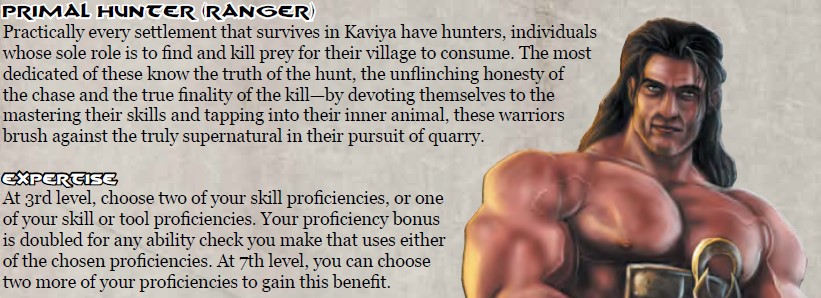

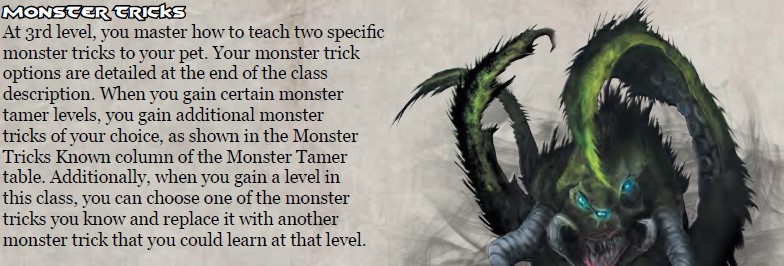
Miscellaneous
The penultimate chapter is a collection of new elements useful to embellish the characters. Specifically we will find magic items (raw mana of different colors and sun stone), spells, feats (to have undead slaves, blessings of ancestors and more), a material (titanic scale), a weapon (a cleaver), a disease (savage vampirism), a condition (fogged), an affliction (mongrelization, or the intake of mana powder with the risk of physical changes) and a background (amnesiac).
These elements are many and can make up for the lack of some classic counterparts that would not be suitable for this setting. In particular, I appreciated the presence of the Raw Mana. It has a strong narrative meaning, connecting man to the world, but at the same time it has various practical uses.



Pregenerated Heroes
This very short final section includes six pre-generated characters, in order to offer valid examples of inhabitants of Vast Kaviya and allow players who do not like creating characters to immediately throw themselves into the adventure. In addition there is also an empty character sheet related the setting. The parts that compose it are not very different from those of the base character sheet, but graphically follows the style of the manual.


Vast Kaviya Campaign Setting
Also this second volume has a fully illustrated cover; the subjects are different, but the style is the same. Good choice! Then follows a handy index that allows us to orient ourselves in the large amount of material proposed.

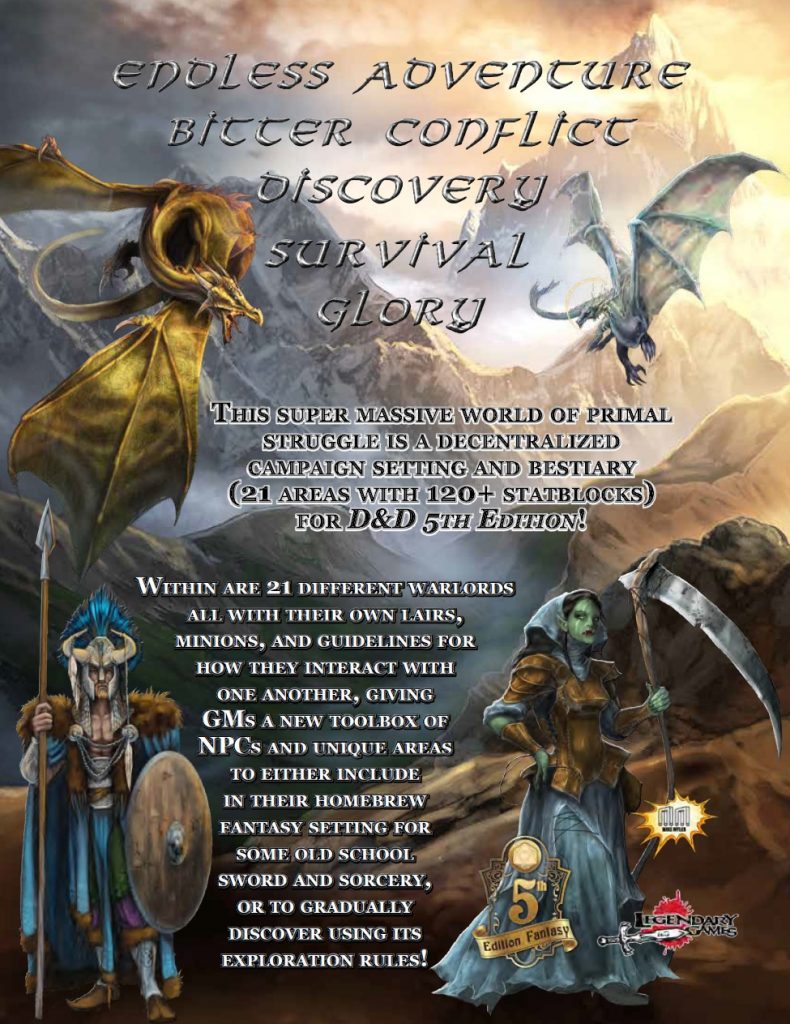
Chapters 1 – 5: Déjà-vu
As for the first five chapters, go and reread what was said for the Adventurer’s Handbook, they are the same thing. Really, they are the same contents reproduced in the same way. Nothing is added or deepened, nor anything changed.
I am very perplexed about this choice. If on the one hand it can be useful as it allows you to buy only the manual you need between the two proposed (the first is for players and the second for the master), on the other hand there are still many repeated pages that are in fact useless for those who want to have both manuals. On balance, I would have preferred a much shorter Campaign Setting but only contain information useful only to the master; in this way it could also have had a reduced cost. But don’t get me wrong: the price of all the offers designed by the authors is totally honest. Especially with regard to the Campaign Setting: at a slightly higher cost you have almost all the contents of the Adventurer’s Handbook plus much more material.
Chapter 6: Warlords
Vast Kaviya is a difficult world to live in and, to try to increase the chances of survival, people gather in tribes. They often form an ancestral and increasingly rooted link with the place they choose as a home. Here they begin to develop, build, cultivate and defend themselves from the dangers of the world.
Each of them is governed by a Warlord (21 in total), who is introduced here together with his relations with the other ones. In this chapter we also find a description of the various regions and many interesting notions about them. The territories are also represented through maps and images. Each area is characterized by a dominant element that influences its inhabitants. We can also find both the monsters that inhabit these lands and are still a threat, and the prominent personalities of the various tribes. In addition, this chapter also introduces the magic items and other novelties already present in the Adventurer’s Handbook, but giving them a more precise context.
Green plains and fearsome volcanoes, deep forests and mysterious peaks. These pages of the Campaign Setting are essential to fully understand the game world and can also offer interesting ideas for Dungeon Masters who want to create their own stories.




Chapter 7: Bestiary
Here all the other creatures are gathered, those nice encounters that we can do almost everywhere inVast Kaviya. And the world is beautiful because it is varied; or at least until that variety tries to chop you up, eat you and digest you.
To be precise, we are talking about thirty creatures, each with an image, a description and a technical data sheet of the characteristics. They are not so many, but they are enough to give a lot of originality to our adventures. Also, given the wild nature of the world, I find it quite easy to include creatures found in other manuals.
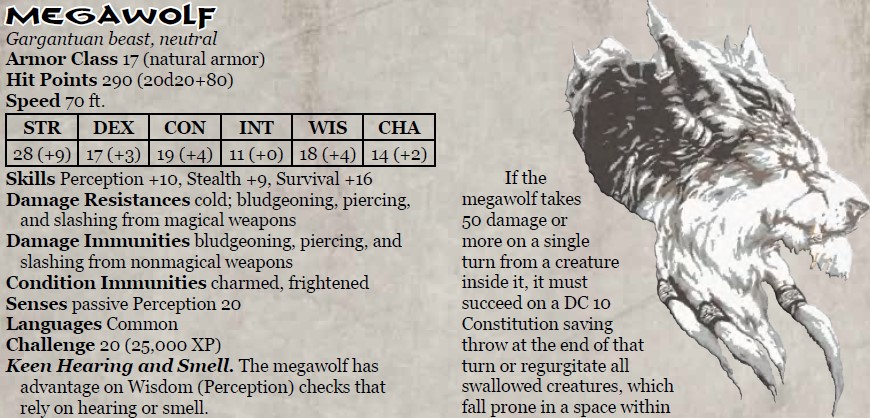

Chapter 8: Adventure – Scorpion Sea Temple
I really appreciated the presence of a complete adventure, which allows players, even beginners, to pick up the manual and start playing immediately. Going into detail, this is an introductory adventure suitable for 4/5 second or third level characters.
It has everything is needed: initial hooks, parts to read, explanations for the narrator, characteristics of the enemies, available treasures, various illustrations and maps of the places that can be visited. In practice, nothing is really missing to enjoy this journey!
But let’s not make too many illusions: it’s not a long or articulated adventure, the twists and turns are few and linearity is high. Its purpose is very good, that is to introduce new players to Vast Kaviya and maybe also to D&D5e, but nothing more.

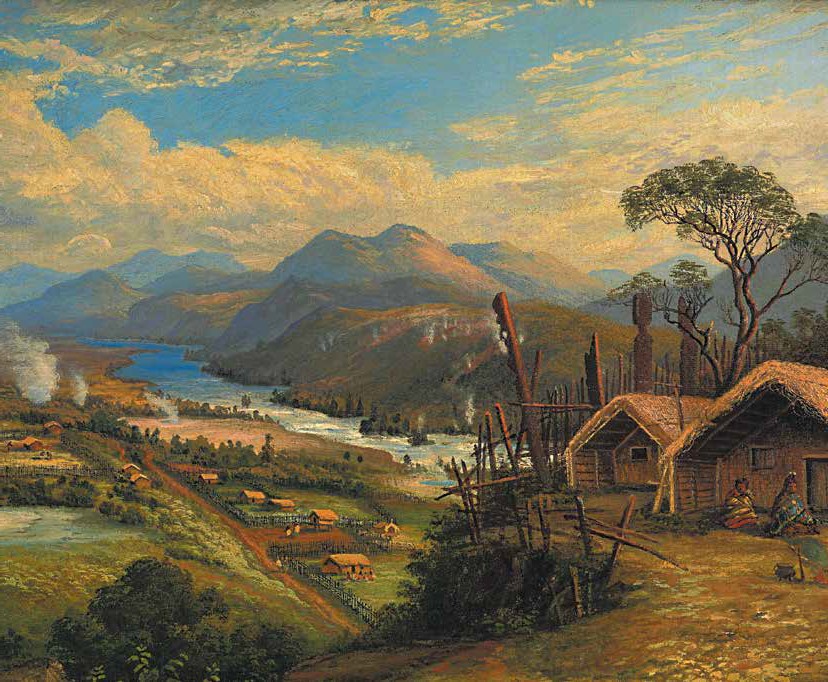

Chapter 9: Otherworlds
The world of Vast Kaviya works very well in its entirety, without the need of any other setting for D&D5e. It can be plausible in all its aspects and the various regions interact organically. In fact, the whole of the various regions can very well represent all the “civilized” and known areas.
However, some masters may want to widen the boundaries and bring Vast Kaviya to other D&D5e worlds. The author has not overlooked this possibility and has indeed provided important ideas for using all the material of this manual in four other settings: Medieval Fantasy, Hypercorps 2099 Wasteland, Mists of Akuma and Book of Exalted Darkness. But pay attention, these are not general advices; for each system there is a paragraph dedicated to each region of Vast Kaviya and how to transport it in that context. A precise and very useful job!
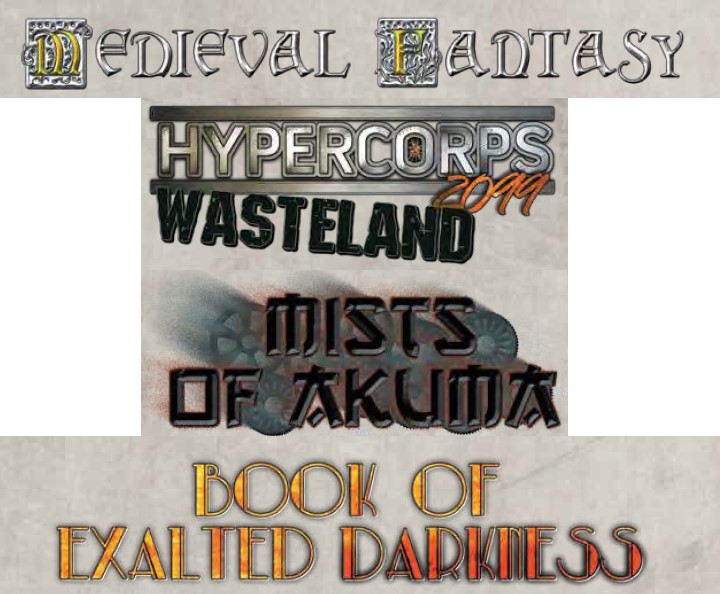
Random Encounter Tables

The rough aspect must not deceive you: they perform their function in a simple and effective way. Each type of climate has its own table and each table offers twenty possible antagonists ready to put the sticks in the wheels at the party.
From this, however, it is easy to understand that the d20 can give the same result at low levels as at high levels. On the one hand, this shows once again how dangerous and ruthless these lands are, but on the other hand, it risks proposing very unbalanced challenges; meeting an ancient blue dragon at level 1 or a giant weasel at level 20 is not very satisfying, even if for different reasons. Of course, a master has the last word on the encountered creatures, but in this case the tables would lose utility and speed of consultation.
Character Sheet
Here too there is an empty two-sided character sheet, ready to be printed and filled out. The graphic style and contents are in all aspects identical to that of the Adventurer’s Handbook. In this case, however, it is not preceded by the pre-generated characters.

